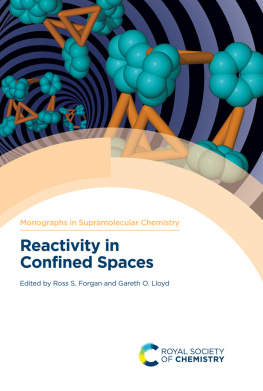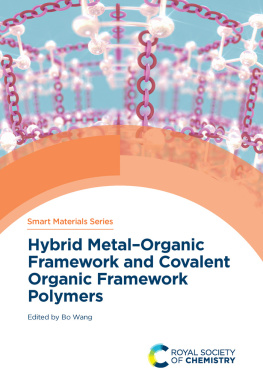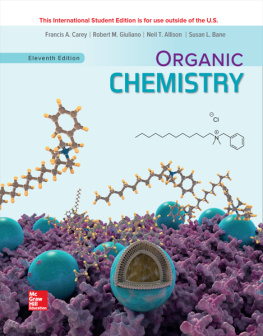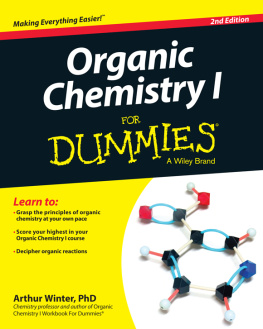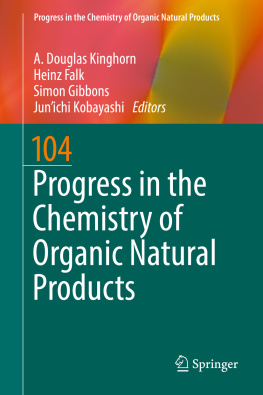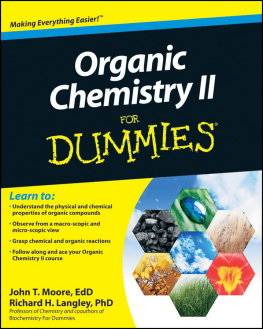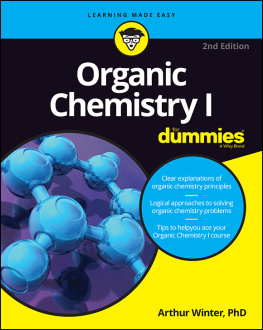Contents
N. H. Evans
R. L. Spicer and P. J. Lusby
Thomas Comerford, Eli Zysman-Colman and Michael D. Ward
J. A. Robson and I. A. Riddell
Carmine Gaeta, Carmen Talotta, Margherita De Rosa, Pellegrino La Manna, Annunziata Soriente and Placido Neri
G. Borsato, F. Fabris and A. Scarso
R. Mart-Centelles and B. Escuder
S. Pullen and G. H. Clever
Hellen Videa and Antonio J. Martnez-Martnez
Gonzalo Campillo-Alvarado, Changan Li and Leonard R. MacGillivray
Sarah L. Griffin, Georgia R. F. Orton, Rosemary J. Young, Christopher J. Sumby, Christian J. Doonan and Neil R. Champness
Xiaoliang Wang and Shengqian Ma
J. King and P.. Szilgyi
D. Armentano and E. Pardo
Reactivity in Confined Spaces
Edited by
Ross S. Forgan
University of Glasgow, UK
Email:
and
Gareth O. Lloyd
University of Lincoln, UK
Email:

Reactivity in Confined Spaces
Monographs in Supramolecular Chemistry No. 31
Print ISBN: 978-1-78801-776-3
PDF ISBN: 978-1-78801-970-5
EPUB ISBN: 978-1-78801-971-2
Print ISSN: 1368-8642
Electronic ISSN: 2041-7144
A catalogue record for this book is available from the British Library
The Royal Society of Chemistry 2021
All rights reserved
Apart from fair dealing for the purposes of research for non-commercial purposes or for private study, criticism or review, as permitted under the Copyright, Designs and Patents Act 1988 and the Copyright and Related Rights Regulations 2003, this publication may not be reproduced, stored or transmitted, in any form or by any means, without the prior permission in writing of The Royal Society of Chemistry or the copyright owner, or in the case of reproduction in accordance with the terms of licences issued by the Copyright Licensing Agency in the UK, or in accordance with the terms of the licences issued by the appropriate Reproduction Rights Organization outside the UK. Enquiries concerning reproduction outside the terms stated here should be sent to The Royal Society of Chemistry at the address printed on this page.
Whilst this material has been produced with all due care, The Royal Society of Chemistry cannot be held responsible or liable for its accuracy and completeness, nor for any consequences arising from any errors or the use of the information contained in this publication. The publication of advertisements does not constitute any endorsement by The Royal Society of Chemistry or Authors of any products advertised. The views and opinions advanced by contributors do not necessarily reflect those of The Royal Society of Chemistry which shall not be liable for any resulting loss or damage arising as a result of reliance upon this material.
The Royal Society of Chemistry is a charity, registered in England and Wales, Number 207890, and a company incorporated in England by Royal Charter (Registered No. RC000524), registered office: Burlington House, Piccadilly, London W1J 0BA, UK, Telephone: +44 (0) 20 7437 8656.
Visit our website at www.rsc.org/books
Printed in the United Kingdom by CPI Group (UK) Ltd, Croydon, CR0 4YY, UK
Monographs in Supramolecular Chemistry
Series editors:
Philip Gale, The University of Sydney, Australia
Jonathan Steed, Durham University, UK
Titles in this series:
1: Cyclophanes
2: Calixarenes
3: Crown Ethers and Cryptands
4: Container Molecules and Their Guests
5: Membranes and Molecular Assemblies: The Synkinetic Approach
6: Calixarenes Revisited
7: Self-assembly in Supramolecular Systems
8: Anion Receptor Chemistry
9: Boronic Acids in Saccharide Recognition
10: Calixarenes: An Introduction, 2nd Edition
11: Polymeric and Self Assembled Hydrogels: From Fundamental Understanding to Applications
12: Molecular Logic-based Computation
13: Supramolecular Systems in Biomedical Fields
14: Synthetic Receptors for Biomolecules: Design Principles and Applications
15: Polyrotaxane and Slide-Ring Materials
16: Boron: Sensing, Synthesis and Supramolecular Self-Assembly
17: Porous Polymers: Design, Synthesis and Applications
18: Pillararenes
19: Supramolecular Chemistry at Surfaces
20: Aromatic Interactions: Frontiers in Knowledge and Application
21: Naphthalenediimide and its Congeners: From Molecules to Materials
22: Functional Supramolecular Materials: From Surfaces to MOFs
23: Supramolecular Amphiphiles
24: Co-crystals: Preparation, Characterization and Applications
25: Molecular Gels: Structure and Dynamics
26: Understanding Intermolecular Interactions in the Solid State: Approaches and Techniques
27: Metallomacrocycles: From Structures to Applications
28: Cucurbiturils and Related Macrocycles
29: Dendrimer Chemistry: Synthetic Approaches Towards Complex Architectures
30: Supramolecular Protein Chemistry: Assembly, Architecture and Application
31: Reactivity in Confined Spaces
How to obtain future titles on publication:
A standing order plan is available for this series. A standing order will bring delivery of each new volume immediately on publication.
For further information please contact:
Book Sales Department, Royal Society of Chemistry, Thomas Graham House, Science Park, Milton Road, Cambridge, CB4 0WF, UK
Telephone: +44 (0)1223 420066, Fax: +44 (0)1223 420247
Email:
Visit our website at http://www.rsc.org/Shop/Books/
Foreword
Since the advent of supramolecular chemistry in the 1970s, studies of chemical reactivity within confined spaces have been among the most vital strands in this field. Work on encapsulation chemistry has taken place in a space that the 1987 Nobel Prize in Chemistry has helped to define, and in particular in the shadow of pioneering work by one of its laureates, the late Donald Cram. Cram was among the first to explore systematically the inner phases (a term he coined) of container molecules such as spherands, which are capable of binding metal cations with 1010 M1 affinity, and carcerands, which crucially extended encapsulation chemistry to neutral molecules. Such landmark results were achieved as the stabilisation and spectroscopic characterization of the fleeting molecule cyclobutadiene.
Upon these foundations were built a wide range of new molecular containers and confined spaces. A profusion of soluble cages and metalorganic frameworks have been reported in recent years, as diverse groups develop the art of defining new molecular voids and examine how molecules react within them. Their reactivity may differ markedly from what is observed in solution, as this book explores.
A newcomer to the field may be intimidated by the many new container molecules and framework materials and by the new encapsulation-related behaviours that have been described in recent years. This book aims to provide a path through these new discoveries, furnishing a resource of knowledge, data and information to allow both experienced and more junior investigators to work on applications and novel science surrounding reactivity in confined spaces. It seeks to highlight connections between separated studies that are related but not often, if at all, grouped into the same book, journal, conference or scientific community.

